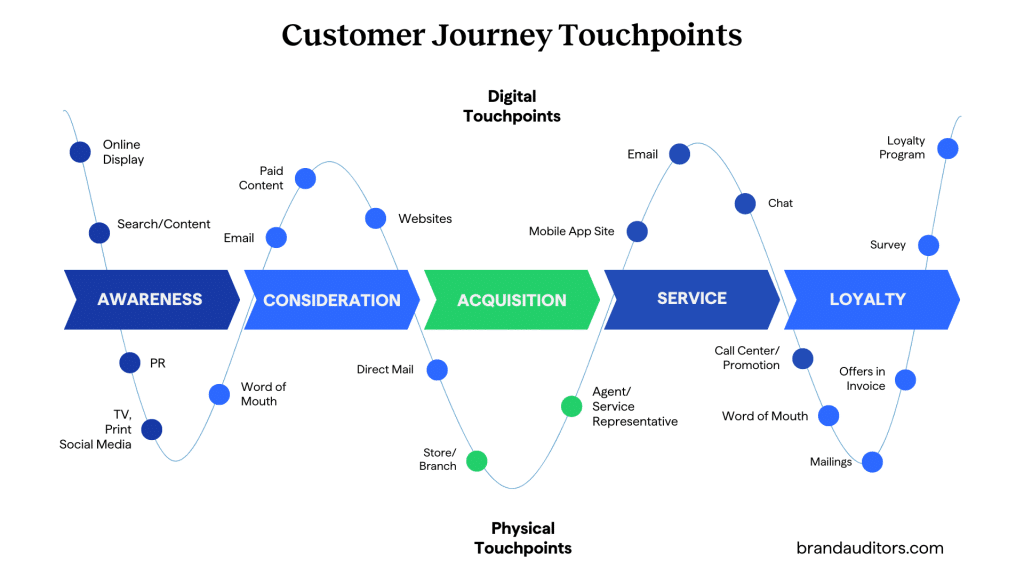Conducting a Brand Standards Audit to Ensure Consistency
Conducting a brand standards audit ensures consistency. Perform a brand audit to evaluate your brand. Improve adherence with brand standards audits.
August 28, 2025

Picture this: You walk into a meeting with your biggest prospect. They’ve seen your website, received emails from your sales team, and interacted with customer service. However, instead of feeling confident about your company, they are still unsure whether to choose your brand over a competitor.
Your value proposition didn’t match what the sales rep shared. When they called customer service, the terminology contradicted everything they’d heard before. Meanwhile, your competitor just landed another major client with a consistent brand presentation that builds trust at every touchpoint.
This scenario plays out every day. Brand inconsistencies cost organizations far more than executives realize.
Companies with consistent brand presentation see revenue increases of 10-20% or more. When customers encounter mixed messages, they get confused. Confused customers are less likely to convert and develop customer loyalty.
A brand standards audit changes this dynamic. This is a systematic evaluation that assesses how well your organization adheres to established brand guidelines in every customer interaction. It identifies gaps between your intended brand presentation and reality, serving as quality control for your most valuable asset.
Understanding the importance of a brand standards audit
There’s a big difference between knowing your brand looks good and knowing it looks consistent. A brand standards audit measures how consistently you apply visual identity, messaging, and brand guidelines across all channels and materials.
This isn’t the same as comprehensive brand audits that examine overall brand health and market position. Brand standards audits focus on ensuring adherence to the existing guidelines.
Standards audits support long-term brand health by identifying exactly where disconnects occur. They help preserve the brand equity you’ve worked years to build and prevent costly rebranding efforts.

Key components of a comprehensive brand standards audit
Visual identity evaluation
Your visual identity creates the first impression customers form about your company.
In fact, 93% of consumers say that visual appearance is the key deciding factor in their purchase decisions. So it’s critical to get it right.
Review your marketing materials for consistent use of the company logo, color scheme, and typography standards.
For enterprise organizations, managing brand assets presents unique challenges. Poor digital asset management often means outdated materials continue to circulate. Review your digital asset management software to ensure teams can easily access current brand assets.
Messaging and voice consistency
Every email, phone call, and social media post shapes customer perception. Your audit should evaluate communication consistency across departments, as customers don’t care which department they’re interacting with.
Document your brand messaging across channels. Use customer feedback, surveys, and social media monitoring to gauge how your messaging resonates with your target audience.
Sentiment analysis tools reveal gaps between what you think you’re communicating and what customers actually hear. Perception measurement helps assess brand awareness and the quality of customer experience.
Brand guidelines and documentation review
Your brand guidelines should answer every question teams have about your brand. However, most sit unused because they don’t help people do their jobs effectively. Evaluate whether guidelines cover scenarios teams encounter daily. Check for gaps in digital applications, social media usage, and vendor communications.
Consider creating brand audit templates and brand audit questionnaire templates to simplify compliance. Ask a sales representative to locate your logo usage guidelines. Can they do it in under two minutes? Guidelines buried in shared drives won’t be followed.

Digital and physical touchpoints assessment
Customers encounter your brand through dozens of touchpoints before making purchasing decisions. Each interaction shapes their perception and influences whether they trust your organization.
Start with your website and work outward. Review your website, social media profiles, email campaigns, and advertising for consistency. Utilize social media analytics to track brand mentions and evaluate your brand’s presence in online conversations. Track metrics, such as bounce rate and user experience, to identify where inconsistencies impact brand performance.
Evaluate how your brand appears in physical locations, packaging, signage, and printed materials. Document how your brand transitions between digital and physical experiences.
Competitive brand standards benchmarking
Understanding competitor brand consistency provides valuable context for your brand’s market position.
Select 3-5 direct competitors and systematically evaluate their brand consistency across channels. Develop a comprehensive brand audit template that evaluates visual consistency, messaging alignment, and adherence to established guidelines. This competitor analysis reveals industry standards and identifies opportunities for competitive advantage.
Document effective brand management strategies competitors use, and compare your brand standards compliance with competitor performance.

The step-by-step process of conducting a brand standards audit
Planning and scope definition
Start with a simple question: What problem are you trying to solve? Define specific objectives aligned with business goals. Are you preparing for a rebrand? Addressing customer confusion? Supporting expansion into new markets?
Identify key stakeholders from marketing, sales, customer service, and operations. Each department creates brand materials and has insights about where consistency breaks down. Cross-functional team involvement ensures comprehensive insights and builds organizational buy-in.
Data collection and inventory
Gather all existing brand assets from across your organization, including logos, templates, marketing materials, and digital content. Brand materials multiply like digital weeds. Use systematic methods to catalog all the information you find. Brand audit checklists help ensure nothing gets overlooked.
Document where materials are stored, who created them, and when they were last updated. This inventory often reveals duplicate assets, outdated materials that teams still use, and unauthorized versions.
Evaluation and analysis
Compare materials against brand standards and create scoring systems to quantify compliance levels. This audit process involves identifying patterns in where and why violations occur.
Analyze brand awareness and customer perception through multiple research methods. Customer surveys reveal how your brand is perceived in the market. Social media analytics show how customers discuss your brand online. Google Analytics data can reveal where website visitors disengage, potentially indicating brand confusion.
If you have a physical store or location, consider using mystery shopping techniques to evaluate the consistency of your brand experience. Have team members interact with your organization as customers would. This approach often reveals inconsistencies that internal teams miss.
Reporting and recommendations
Transform findings into a comprehensive brand audit report that leadership can use to make decisions. Your report should highlight both strengths and areas for improvement, providing clear evidence to support each finding.
Include a SWOT analysis focused on brand standards compliance. Identify internal strengths and weaknesses. These reveal what you do well, and what items require attention. Develop detailed action plans that prioritize improvements based on impact and feasibility. Create a roadmap that strikes a balance between quick wins and strategic improvements.

Benefits of performing a brand standards audit
Ensuring brand cohesion and recognition
When your brand looks and sounds the same everywhere, customers develop stronger trust and are more likely to choose your product or service over those of your competitors.
Identifying and correcting brand misalignments
Brand standards audits identify where your brand deviates from guidelines before problems damage your reputation. Regular brand audits help maintain brand integrity and support effective brand management.
Supporting rebranding or brand refresh initiatives
Whether you’re planning a rebrand, launching new products, or expanding into new markets, brand standards audits provide the baseline needed for strategic decisions. Audits help establish clear brand goals.
Enhancing brand credibility and trust with stakeholders
A consistent brand presentation builds credibility with all stakeholders, including customers, employees, partners, and investors. Brand consistency demonstrates organizational competence and supports brand reputation.
Facilitating consistent customer experience and engagement
Brand consistency eliminates the need to recreate materials that already exist elsewhere in your organization. Teams spend less time on production and more time on strategic marketing initiatives. This improves marketing efficiency and ensures customers can engage with your brand seamlessly.
Measuring return on investment
The investment in regular brand audits pays for itself through improved performance metrics and stronger customer relationships.
Tools and templates for brand standards audits
Utilize brand audit questionnaire templates to ensure consistent evaluation criteria. These templates ensure you compare results across different audit cycles.
Invest in robust digital asset management software that offers version control and usage tracking capabilities. Popular solutions include Brandfolder, Bynder, and Adobe Experience Manager Assets.
Implement brand standards compliance tracking systems for ongoing monitoring and enforcement. Social media monitoring tools can help you track brand mentions and assess the sentiment associated with them.
Leverage Google Analytics, social media analytics, and customer feedback platforms to correlate brand consistency with performance metrics. This data supports the business case for maintaining standards.
Final tips for a successful brand standards audit
Build support from all departments that create or use brand materials. Marketing, sales, customer service, and operations teams all contribute to brand consistency.
Don’t treat brand standards audits as one-time events. Schedule regular brand audits at least once a year to ensure consistency and accuracy. Market changes and organizational growth require ongoing attention to brand consistency.
Consider engaging professional brand strategists for an objective evaluation of your brand. External experts bring fresh perspectives and industry benchmarking capabilities.
Connect audit outcomes to broader brand strategy decisions. When audits connect to business outcomes, they receive proper organizational support.
Implement processes that maintain brand standards between audits. Assign brand guardians in each department and create approval workflows for new materials. This ensures that your brand remains consistent and that regular audits help maintain long-term brand health.
Take action on your brand consistency today
Brand inconsistency costs your organization money daily, while competitors strengthen their position through consistent branding and presentation. Internal teams often lack the systematic methodology required for a comprehensive evaluation of brand standards.
Don’t let inconsistent branding undermine your marketing investments. Contact The Brand Auditors today to discover how a professional brand standards audit can strengthen your organization’s performance.
Ready to learn more?
Connect with a strategist for a no-obligation session designed to pinpoint your brand's biggest opportunities and get a clear path to successful outcomes.

POST AUTHOR
Core services
Digital marketing
audit services
Discover how to improve marketing campaigns, strengthen the impact of every customer touchpoint, and focus resources on the actions that generate more revenue.
Customer experience strategy consulting
Turn raw customer data into audience personas and laser-focused messaging.
